The Honeywell Pro 6000 Install Manual guides users through installing and configuring the thermostat, ensuring optimal performance and energy efficiency with detailed, step-by-step instructions for a seamless setup process․
Overview of the Honeywell Pro 6000 Thermostat
The Honeywell Pro 6000 Thermostat is a programmable, energy-efficient solution designed for seamless integration with various heating and cooling systems․ It features a user-friendly interface, programmable scheduling, and compatibility with multiple system types, including forced air, heat pumps, and hydronic systems․ The thermostat supports advanced functionalities like emergency heat settings and fan operation․ Its compact design includes a backlit display for easy readability and a UWP mounting system for secure installation․ Additionally, it offers optional features such as a decorative cover plate and remote sensors for enhanced system control․ This thermostat is ideal for homeowners seeking precise temperature management and energy savings․
Importance of Proper Installation
Proper installation of the Honeywell Pro 6000 Thermostat is critical to ensure safe, efficient, and reliable operation․ Incorrect wiring or setup can lead to system malfunctions, reduced energy efficiency, or even safety hazards․ By following the installation manual meticulously, installers can prevent issues such as short circuits, incorrect connections, or improper thermostat calibration․ Proper installation also ensures optimal performance of advanced features like emergency heat and remote sensors․ Taking the time to install the thermostat correctly guarantees a seamless user experience, reliable temperature control, and long-term energy savings․ It is the foundation for maximizing the thermostat’s capabilities and ensuring trouble-free operation․
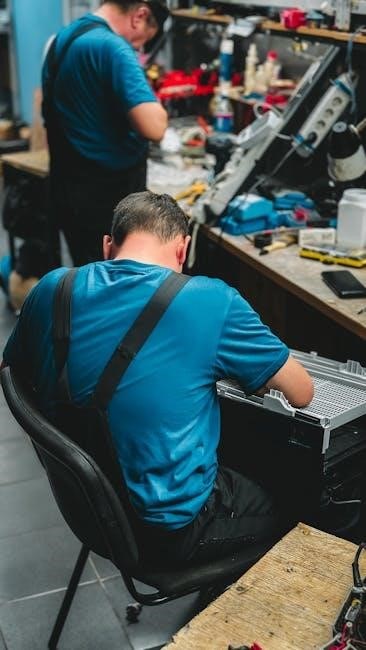
System Requirements and Preparations
Ensure compatibility with Honeywell zoning panels and disconnect power before installation․ Verify system type and install field jumpers for emergency heat if needed to ensure smooth setup․
Compatibility with Honeywell Zoning Panels
The Honeywell Pro 6000 thermostat is designed to integrate seamlessly with Honeywell zoning panels, allowing for advanced temperature control in zoned systems․ Proper panel configuration ensures smooth operation, especially when switching to emergency heat modes․ Connecting the thermostat to compatible panels enhances system performance and efficiency․ Ensure the zoning panel is set up to recognize the thermostat and that all wiring connections are securely made․ This integration supports optimal heating and cooling distribution across zones, providing consistent comfort throughout the home․
Disconnecting Power Before Installation
Before starting the installation of the Honeywell Pro 6000 thermostat, it is crucial to disconnect the power supply to the HVAC system․ This safety precaution prevents electrical shocks, injuries, or damage to components․ Switch off the circuit breaker or remove the appropriate fuses controlling the system․ Verify that the system is completely powered down using a voltage tester if necessary․ Only proceed with installation once all power is safely disconnected․ This step ensures a safe working environment and protects both the installer and the equipment from potential hazards during the setup process․
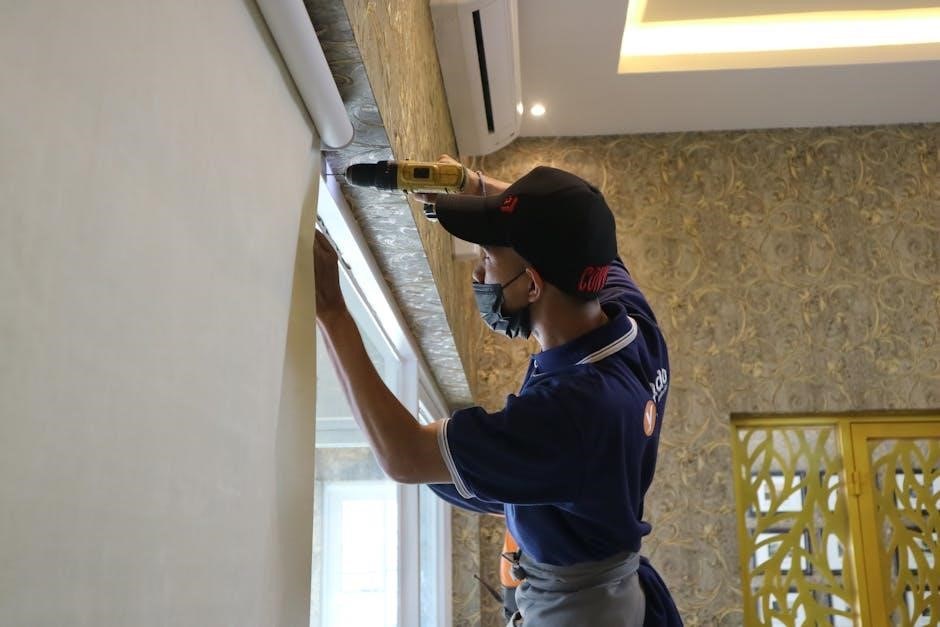
Wallplate and Wiring Installation
Begin by removing the wallplate from the thermostat and follow the mounting instructions for a secure installation․ Properly connect all wires to their respective terminals to ensure system functionality and avoid potential issues․
Removing the Wallplate from the Thermostat
To remove the wallplate, start by disconnecting the power supply to the thermostat for safety․ Gently grasp the wallplate and pull it away from the thermostat body․ This step allows access to the wiring and mounting hardware․ Remove the battery holder if necessary, ensuring no components are damaged during the process․ Proper removal is essential for installing the thermostat correctly and preventing any electrical issues․ After removing the wallplate, proceed with mounting the thermostat to the electrical junction box, ensuring a secure and level installation․ This step is crucial for proper system functionality and appearance․ Always follow the manufacturer’s instructions carefully․
Mounting the Thermostat to an Electrical Junction Box
Mounting the Honeywell Pro 6000 thermostat to an electrical junction box ensures a secure and stable installation․ Begin by aligning the thermostat’s mounting holes with the junction box screws․ If the junction box is not flush with the wall, use the provided adapter plate to achieve a level surface․ Gently press the thermostat onto the junction box, ensuring it is evenly aligned․ Secure it firmly using the screws provided․ For older installations, the optional cover plate can be used to conceal any paint gaps; Proper mounting ensures reliable performance and a professional finish․ Follow the manual’s guidelines for precise alignment and tightening to avoid damage․
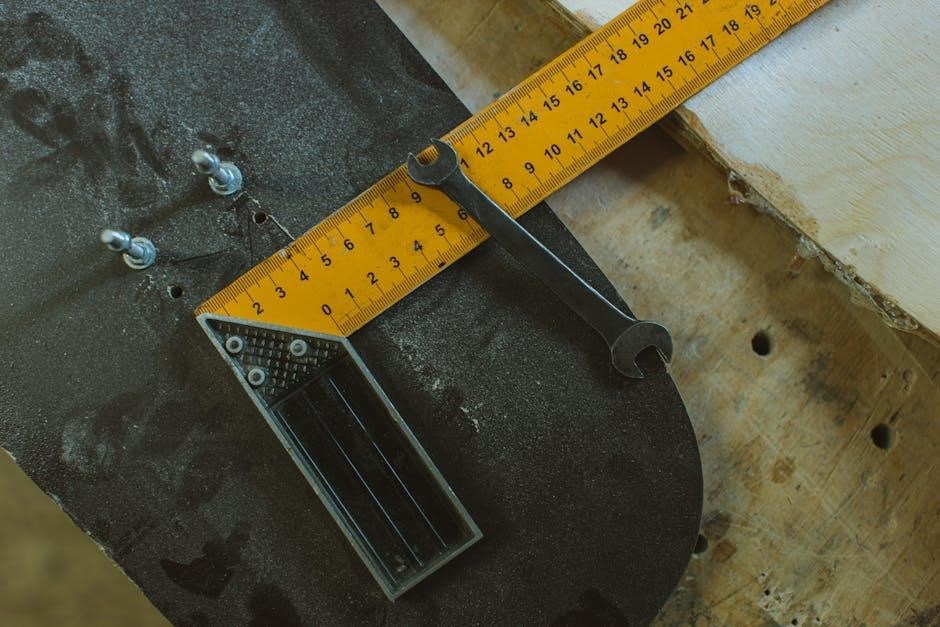
Installer Setup and Configuration
Installer setup begins with configuring system settings, including Function 12, to match the heating/cooling system․ Refer to the manual for detailed steps and customization options․
Configuring the Thermostat for Heating/Cooling Systems
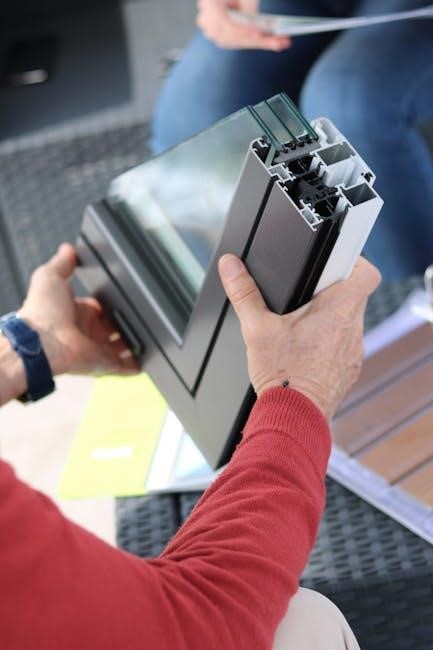
Configuring the Honeywell Pro 6000 for heating and cooling systems involves setting Function 12 to Manual or Auto, as per the installer setup instructions․ This step ensures the thermostat aligns with the installed HVAC system․ Follow the step-by-step guide in the manual to customize features like temperature ranges and system operation modes․ Proper configuration is crucial for optimal performance and energy efficiency․ Always adhere to the manufacturer’s guidelines to avoid system malfunctions and ensure compatibility with your specific heating/cooling setup․
Setting Up Emergency Heat Functionality
To set up emergency heat functionality on the Honeywell Pro 6000, connect it to compatible Honeywell zoning panels to enable emergency heat mode․ Install a field jumper between the Aux and E terminals if no emergency heat relay is present․ Follow the manual’s configuration steps to activate this feature, ensuring it works seamlessly with your HVAC system․ Proper setup guarantees reliable operation during critical heating needs․ Failure to configure this correctly may lead to reduced system efficiency or safety risks․ Always refer to the manual for precise instructions to ensure optimal performance and functionality․

Testing and Verification
Testing ensures the Honeywell Pro 6000 operates correctly․ Follow manual instructions to test heating, cooling, fan, and emergency heat functions for optimal performance and reliability․
Testing Heating, Cooling, and Fan Operations
Testing Heating, Cooling, and Fan Operations ensures the Honeywell Pro 6000 functions properly․ Start by enabling the thermostat and switching modes to test heating and cooling․ Verify the system responds correctly by checking airflow and temperature changes․ For fan operation, set the fan to “On” and ensure it runs continuously․ Use the manual’s system test guide to confirm all functions operate as expected․ Address any issues promptly to ensure reliable performance and energy efficiency․ Follow the step-by-step instructions to validate system compatibility and proper installation․
- Test heating by raising the setpoint and verifying heat activation․
- Test cooling by lowering the setpoint and checking AC operation․
- Test fan operation in both auto and manual modes․
- Verify system responsiveness and correct temperature adjustments․
Verifying Emergency Heat Settings
Verifying Emergency Heat Settings ensures the system operates correctly during extreme conditions․ After installation, access the Installer Setup menu and confirm Function 12 is configured for Manual or Auto mode․ Test emergency heat by lowering the setpoint below the current room temperature and selecting “Emergency Heat” mode․ Verify the system activates the emergency heat relay and the heating source responds․ Check for proper operation and adjust settings if necessary․ Ensure compatibility with zoning panels by installing field jumpers between Aux and E if no emergency heat relay is present․ Confirm all safety and operational parameters are met for reliable performance․
- Lower the setpoint to activate emergency heat mode․
- Verify the system responds with heat activation․
- Check wiring connections and system compatibility․
- Adjust settings if the emergency heat does not engage․
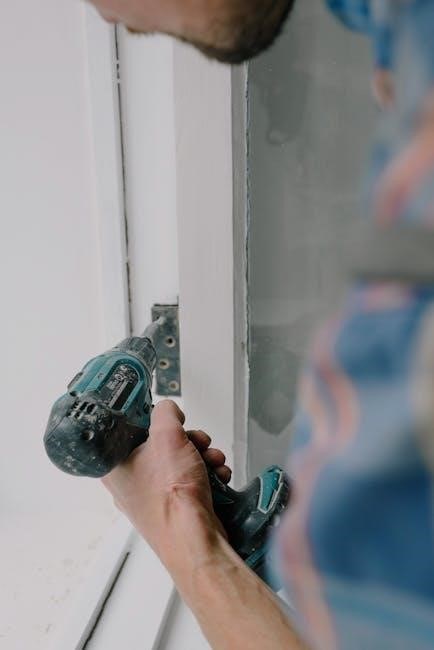
Troubleshooting Common Issues
Identify and resolve common issues like power supply problems, wiring mismatches, and system incompatibilities․ Ensure proper connections and compatibility with Honeywell zoning panels for reliable operation․
- Check power connections and wiring for damage or misconfiguration․
- Verify system compatibility with the Honeywell Pro 6000 thermostat․
- Consult the manual for specific error codes and solutions;
Resolving Installation-Related Problems
Common installation issues include power supply problems, wiring mismatches, and system incompatibilities․ Always disconnect power before troubleshooting to avoid damage or safety risks․ Check wiring connections for damage or incorrect configuration, ensuring compatibility with Honeywell zoning panels․ Verify that the thermostat is properly mounted and secured to the electrical junction box․ If issues persist, consult the manual for specific error codes and solutions․ Addressing these problems early ensures reliable performance and prevents future malfunctions․ Proper installation is key to optimal functionality and energy efficiency․
- Disconnect power before troubleshooting․
- Inspect wiring for damage or misconfiguration․
- Ensure compatibility with Honeywell zoning panels․
- Refer to the manual for error codes and solutions․
Addressing System Compatibility Concerns
Ensure the Honeywell Pro 6000 thermostat is compatible with your heating/cooling system․ Verify system type, voltage, and wiring requirements before installation․ Check for compatibility with Honeywell zoning panels and ensure proper connections․ If using emergency heat, install the field jumper between Aux and E if no emergency heat relay is present․ For non-compatible systems, consult the manual or contact Honeywell support․ Proper configuration ensures seamless operation and avoids system malfunctions․ Addressing compatibility early guarantees reliable performance and optimal energy efficiency․
- Verify system type and voltage requirements․
- Check compatibility with Honeywell zoning panels․
- Install field jumper for emergency heat if needed․
- Consult manual or support for non-compatible systems․
